Portfolio
PCB Portfolio
Active Projects
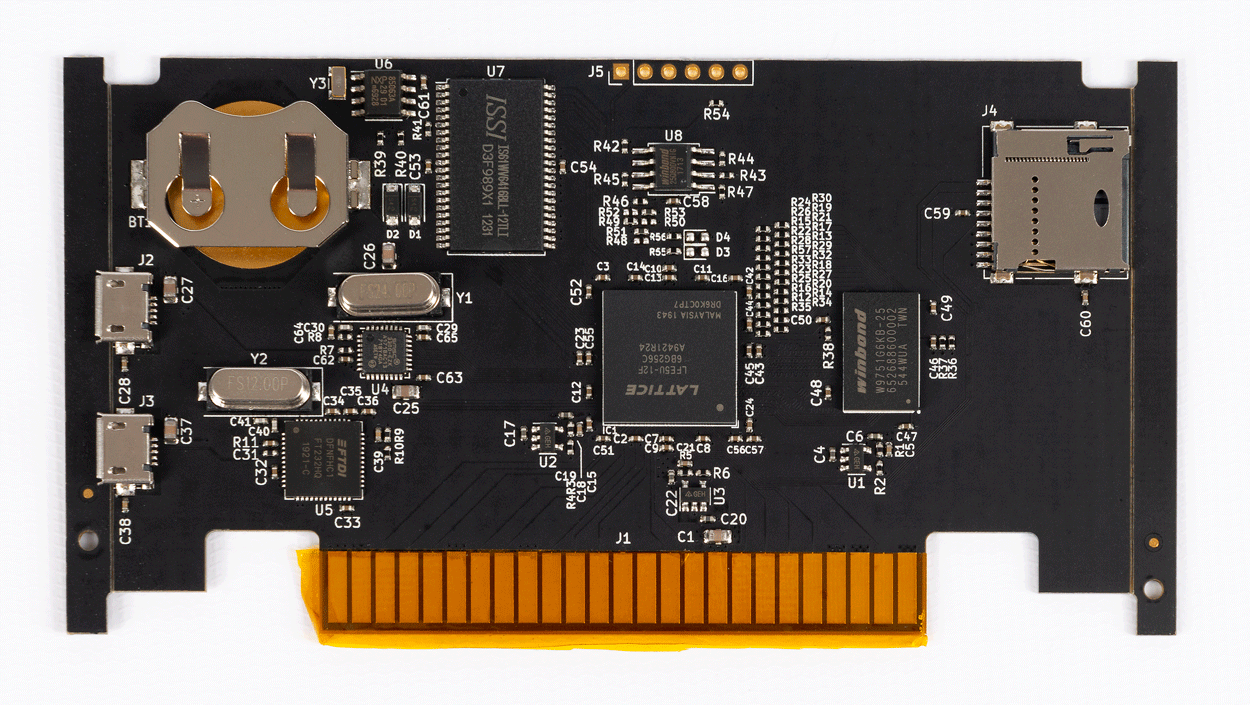
Runelord is an active project to develop a Nintendo 64 flash cart which is released as Open Source Hardware and driven entirely by Open Source Software.
Post-Adamant
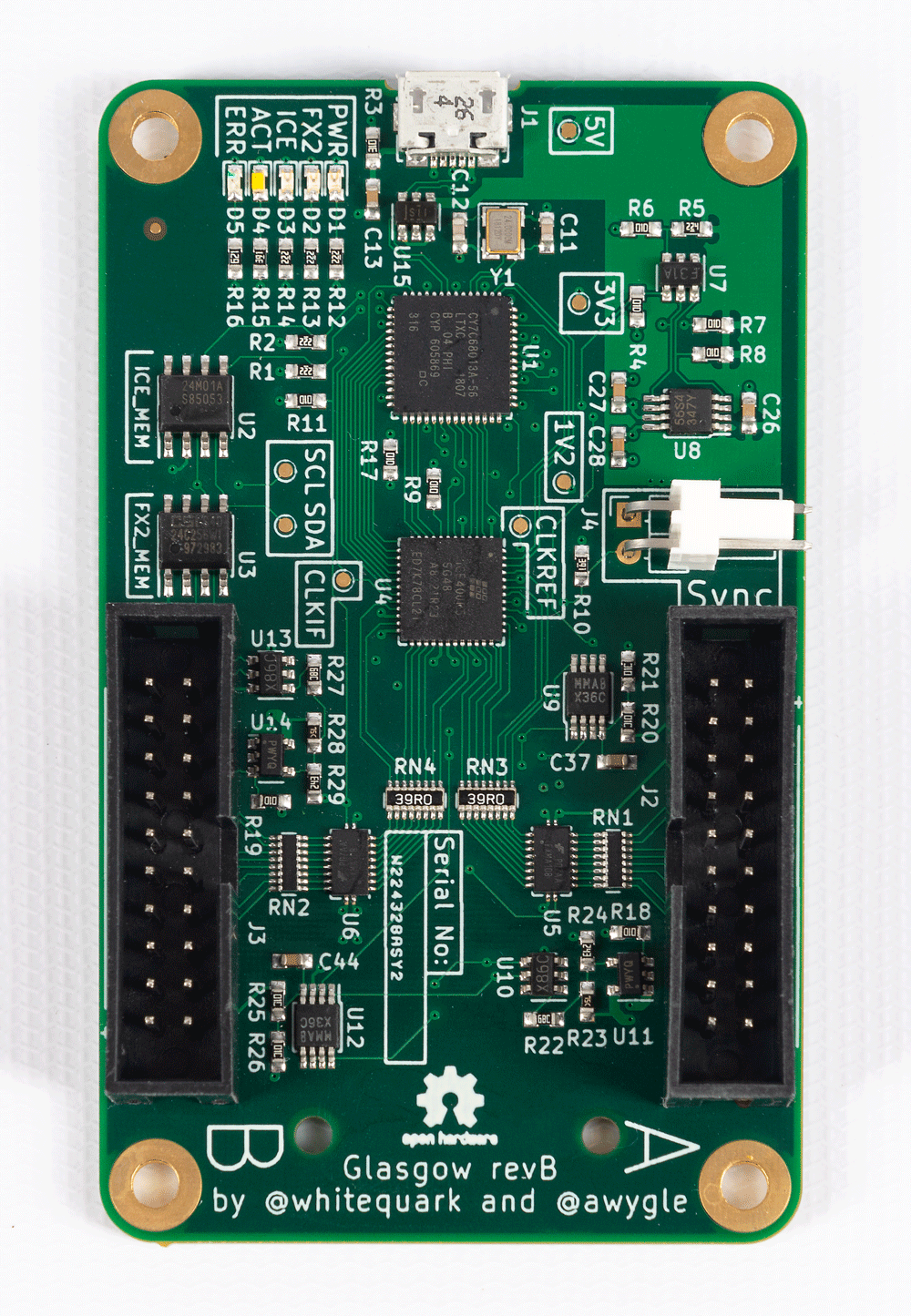
The Glasgow Interface Explorer is a multi-tool for digital electronics, intended to replace the proliferation of programmers, serial cables, and logic analyzers which clutter many designers' desks. I was deeply involved in the first two revisions of the PCB, while marcan42 was the primary designer of the Rev C and esden as well as many others contributed to the production Rev C2. My contributions to the Rev B were primarily around the level shifters (which were originally auto-direction-sensing but which were transitioned to direction-controlled after we encountered insurmountable difficulties) and the ADC and DAC designs used to match the interface ports with the Device Under Test's voltage. Glasgow recently completed a successful CrowdSupply crowdfunding campaign and is now manufactured primarily by 1bitsquared.
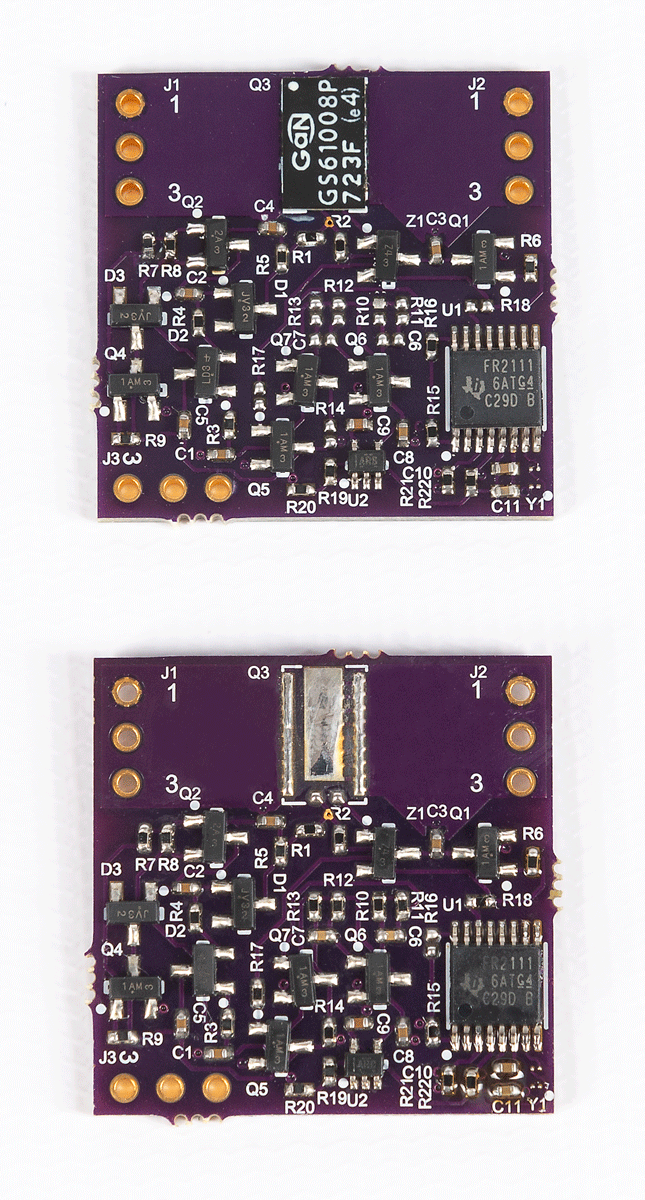
This design is an nFET controller for new eGaNFET devices. GaNFET devices are excellent choices for space applications because they have very low on resistance and are very tolerant of most radiation effects. However, they are only recently available in enhancement (rather than depletion) modes, and they are still only available as nFETs (rather than pFETs). This design is intended for use as a high-side power switch. It is designed entirely with discrete BJT transistors because BJT transistors are less likely to fail catastrophically when exposed to most forms of radiation than FETs. Rather than a destructive event like a gate rupture, BJTs will instead see a decrease in their gain but will otherwise continue to function (up to a point).
Elysium
The Elysium VHF/UHF Transceiver was the primary (and in some sense the only) product of Adamant Aerospace. It is designed specifically for the needs of small CubeSats, in the 1U to 6U class. What that means in terms of technical design constraints is that solar panel area is very limited and thus power consumption tends to be the limiting factor on system performance. For this reason the Elysium established a power consumption target of 25 mW for its receiver, an order of magnitude less than the next best in class, and an efficiency target of 50% at 5W for its transmitter.
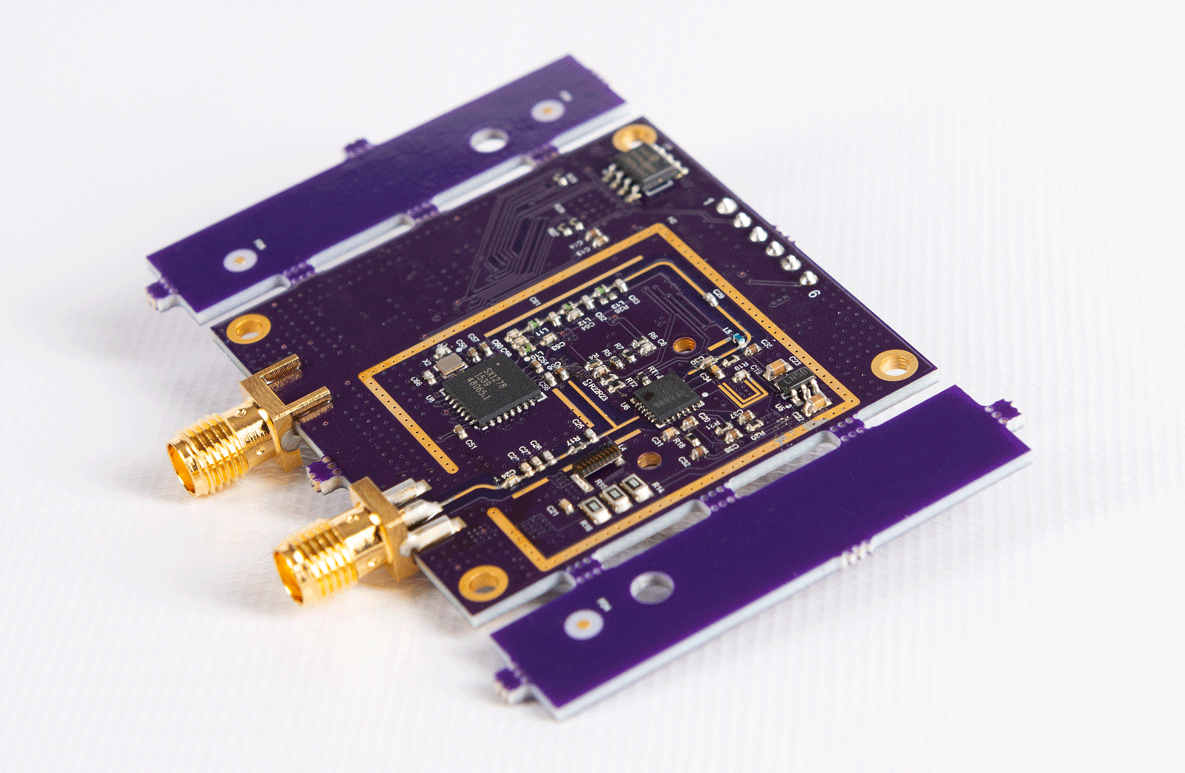
The Elysium transmitter is based on a Class C RF amplifier, which trades increased efficiency for increased nonlinearity. This is an acceptable tradeoff as long as the Peak to Average Power Ratio of the transmitter is close to 1, which is why a Frequency Shift Keying modulation was chosen.
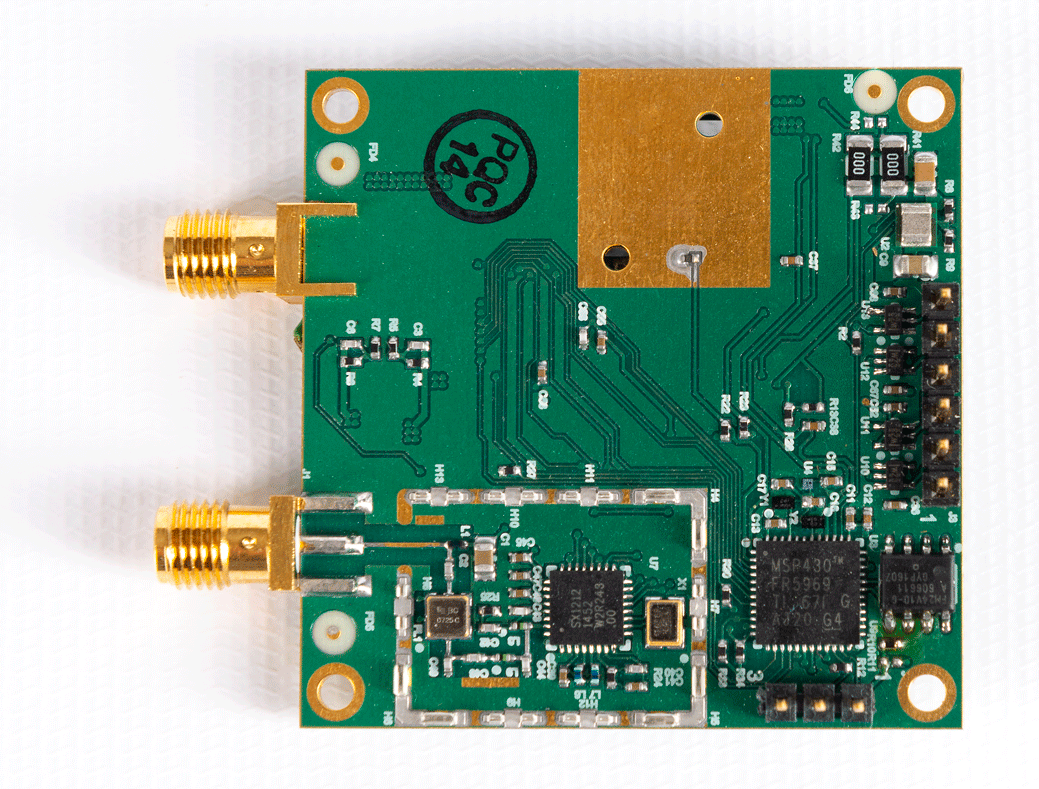
The Elysium receiver is based on a highly integrated RFIC from Semtec which draws 3 mA in a receiver idle configuration. The tradeoff for this low power draw is that the frontend has a very high noise figure of nearly 6 dB, mostly due to how tightly coupled it is to the digital circuits.
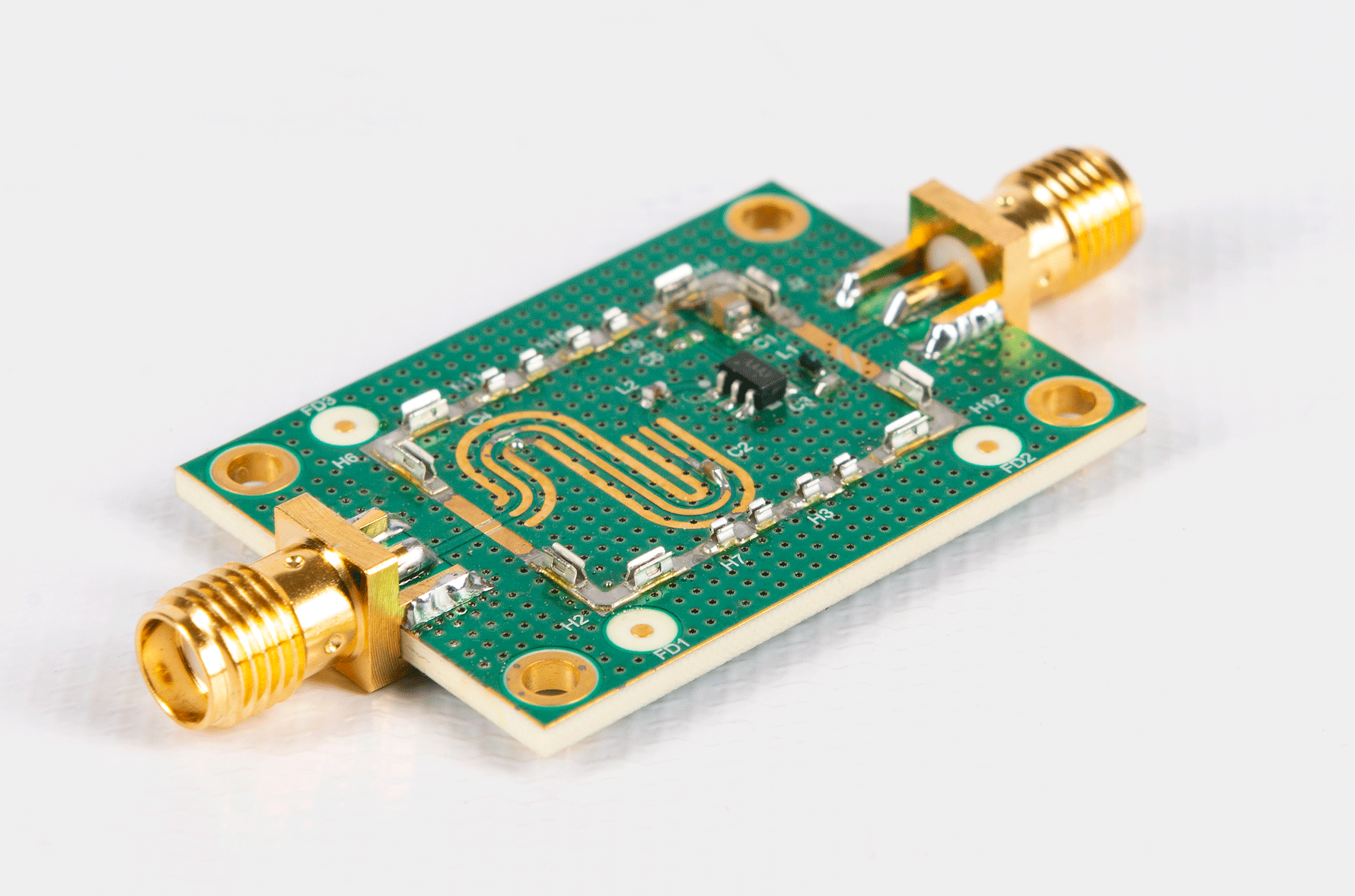
To overcome this high receiver noise factor, a discrete Low Noise Amplifier (LNA) was designed to bring the system noise figure down to a more acceptable value of less than 2 dB. The LNA is powered via a bias tee which is a load option on the main Elysium board and is efficient enough that even with it enabled the total system power draw remains under the 25 mW target in the receive idle mode.
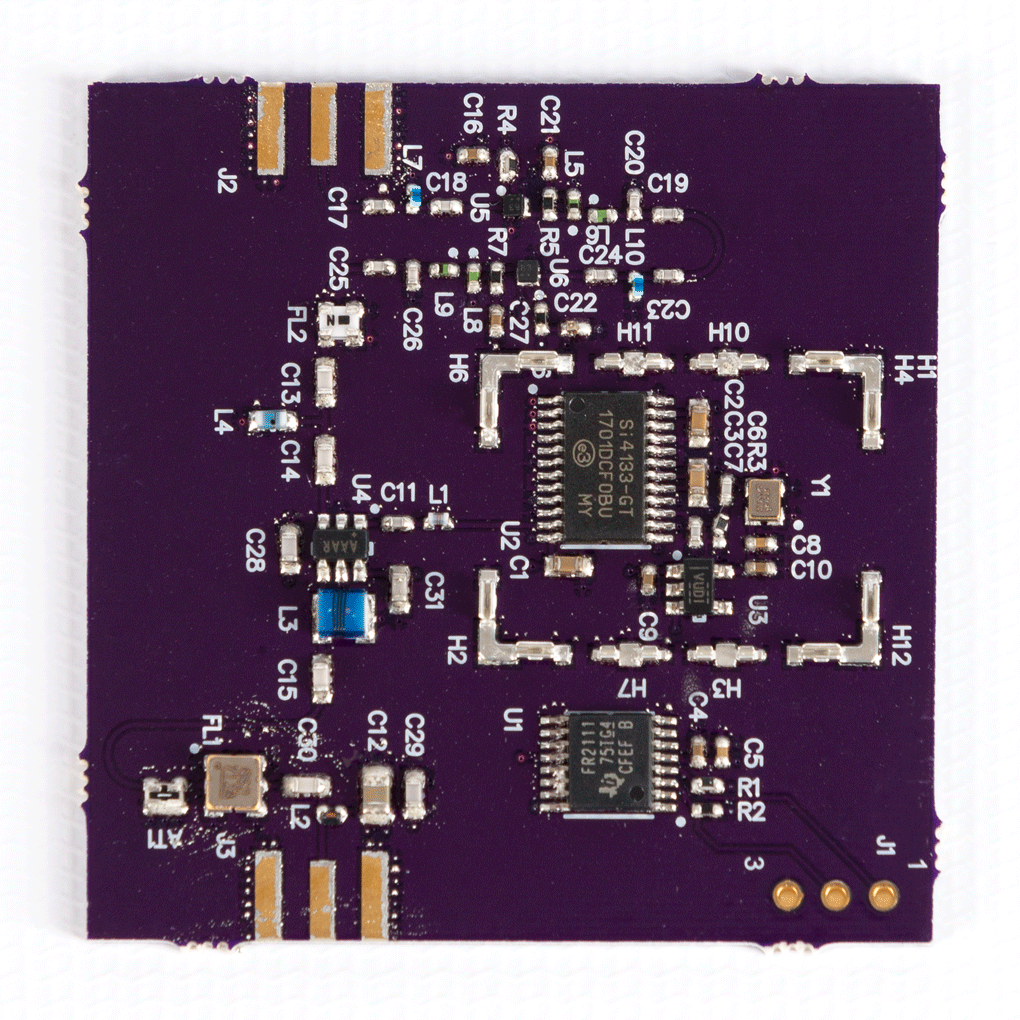
Although many CubeSats operate in the VHF and UHF bands, it is increasingly common to see them use the S-band or X-band as well. To enable the Elysium to serve customers with an uplink allocation in the S-band, a Low Noise Block Converter (LNB) was designed to convert from the 2100 MHz band to the 137 MHz VHF band. The VHF band is used as an intermediate frequency. The total system power consumption in this configuration is less than 100 mW in the receiver mode, which is again an order of magnitude better than the next best in class (or was at the time I designed it). Cascaded LNAs keep the system noise figure under 2 dB.
Arkyd 3
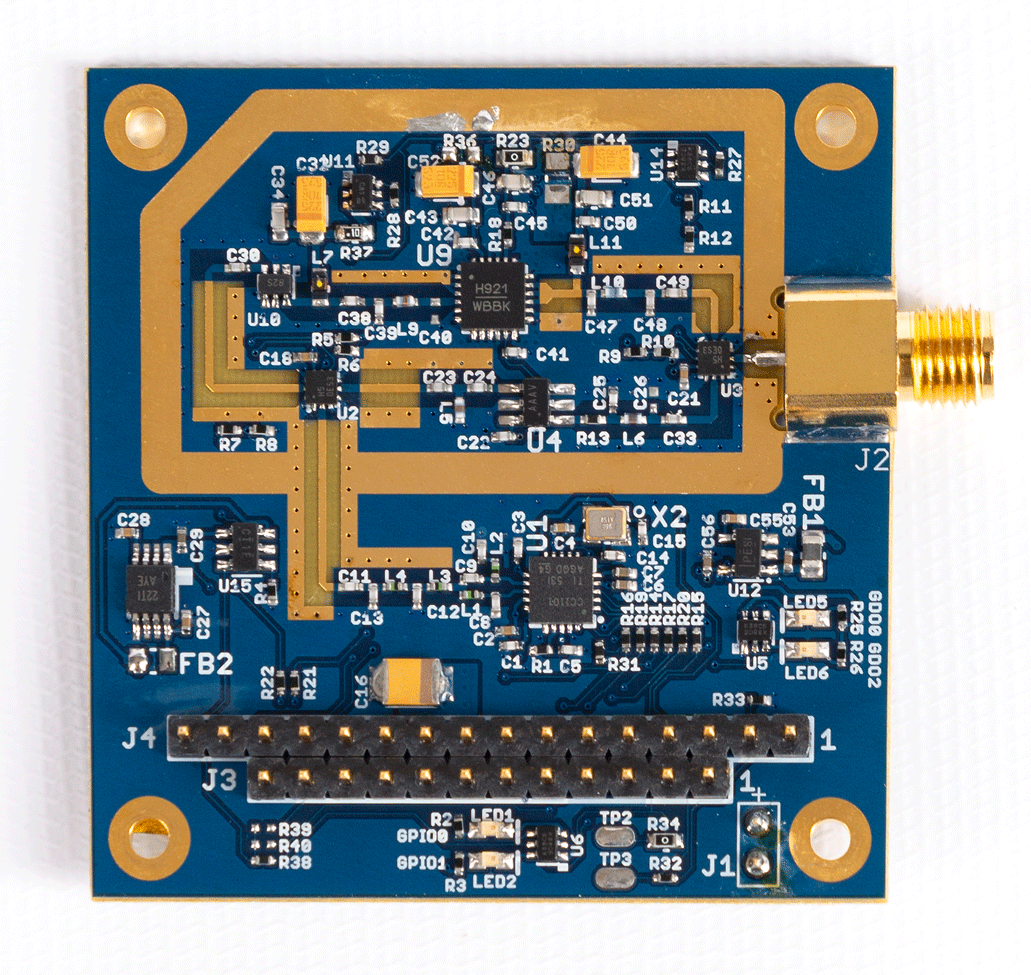
This is a UHF transceiver which was designed by BitBeam, a now-defunct RF product development company, according to my specifications as the Lead RF Communications Engineer at Planetary Resources. This radio was targeted at the Arkyd 6 CubeSat, which was intended as a demonstration of Mid-Wave Infrared imaging technology for asteroid prospecting. It was the low-speed Telemetry, Tracking, and Command radio which served as a fail-safe communication method for the mission. It was paired with a high-speed SDR-based radio for payload data downlink.
The BB425 would inspire some features of the Elysium radio later, in particular the need for extremely low power consumption in the idle receive mode. The Elysium radio consumed an order of magnitude less power than the BB425 in that mode (25 mW as compared to 250 mW).
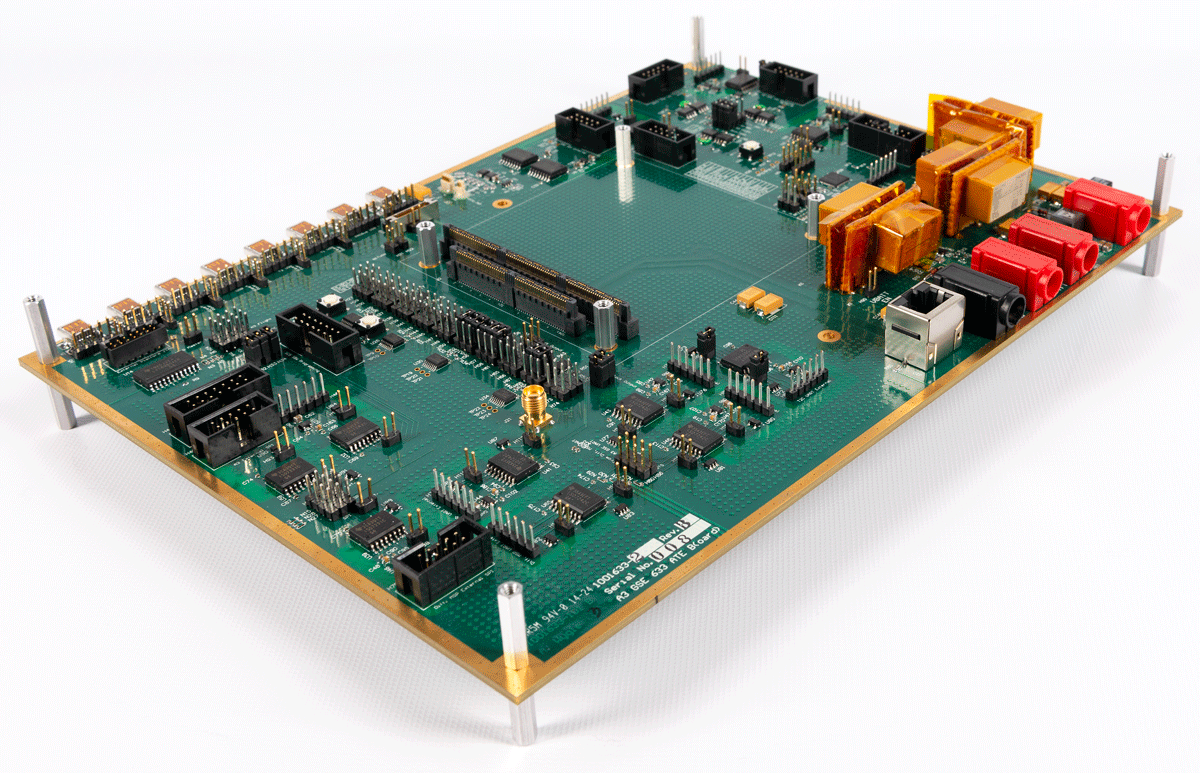
This board was the Ground Support Equipment and the Automated Test Equipment for the Arkyd 3 satellite. It was intended to be able to substitute for any subset of the avionics stack boards, as well as drive the necessary control signals over isolated communication interfaces.
Although this board served its purpose, the process of design was very difficult, with many different stakeholders each with strong opinions. The timeline was also very tight for the project, which further raised tensions. From this project I learned to see the signs of such tense situations coming, which allows me to anticipate them and get out ahead of any potential conflicts. Although it was a very unpleasant experience at the time, I use those skills regularly in my day to day work, so on balance I'm glad I worked on this project.
College
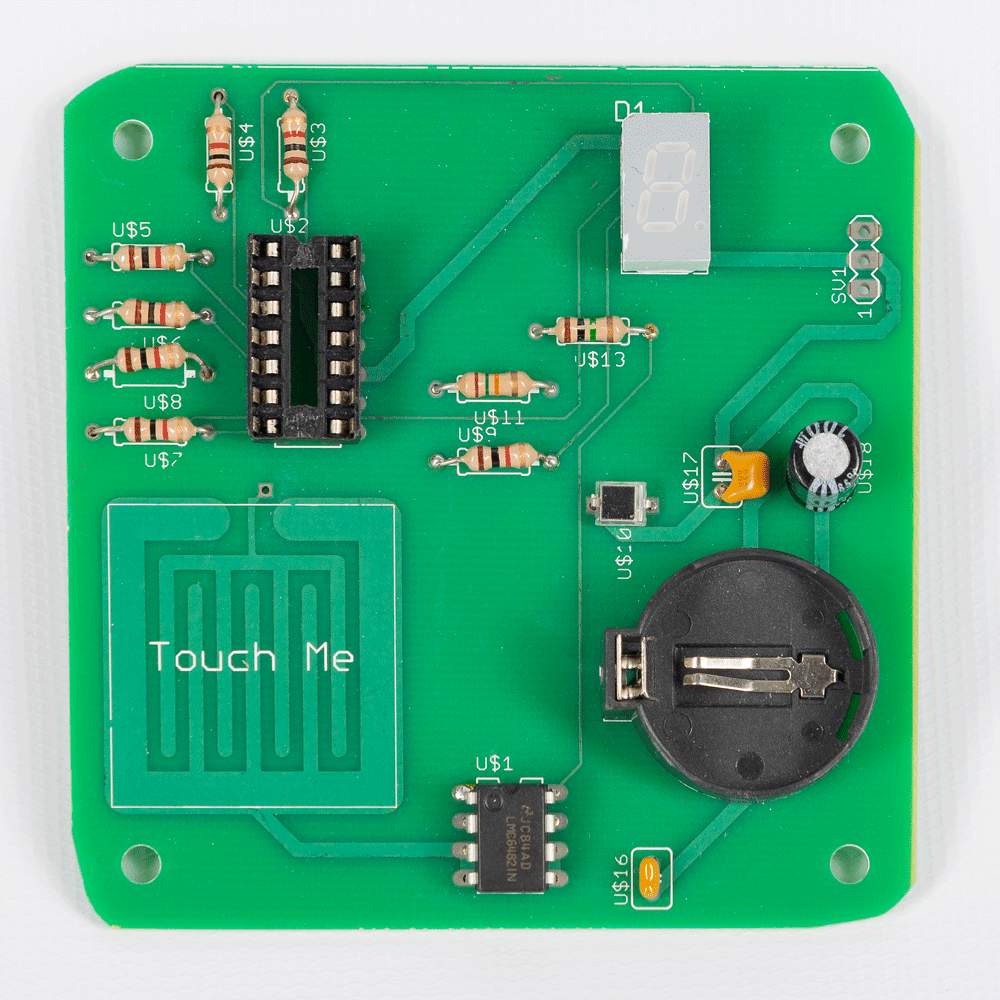
This is the first PCB I ever worked on, as part of a circuit design class for my Electrical Engineering degree. I worked on it with one other student. Its function is to display a digit on the 7-segment display based on the capacitance measured at the capacative sensing pad. It integrated an op amp, a photocell, and an MSP430 microcontroller.
In hindsight, there are a lot of things wrong with this board (needlessly thin traces, terrible soldering, inefficient layout), but for a first effort I'm still quite proud of it.